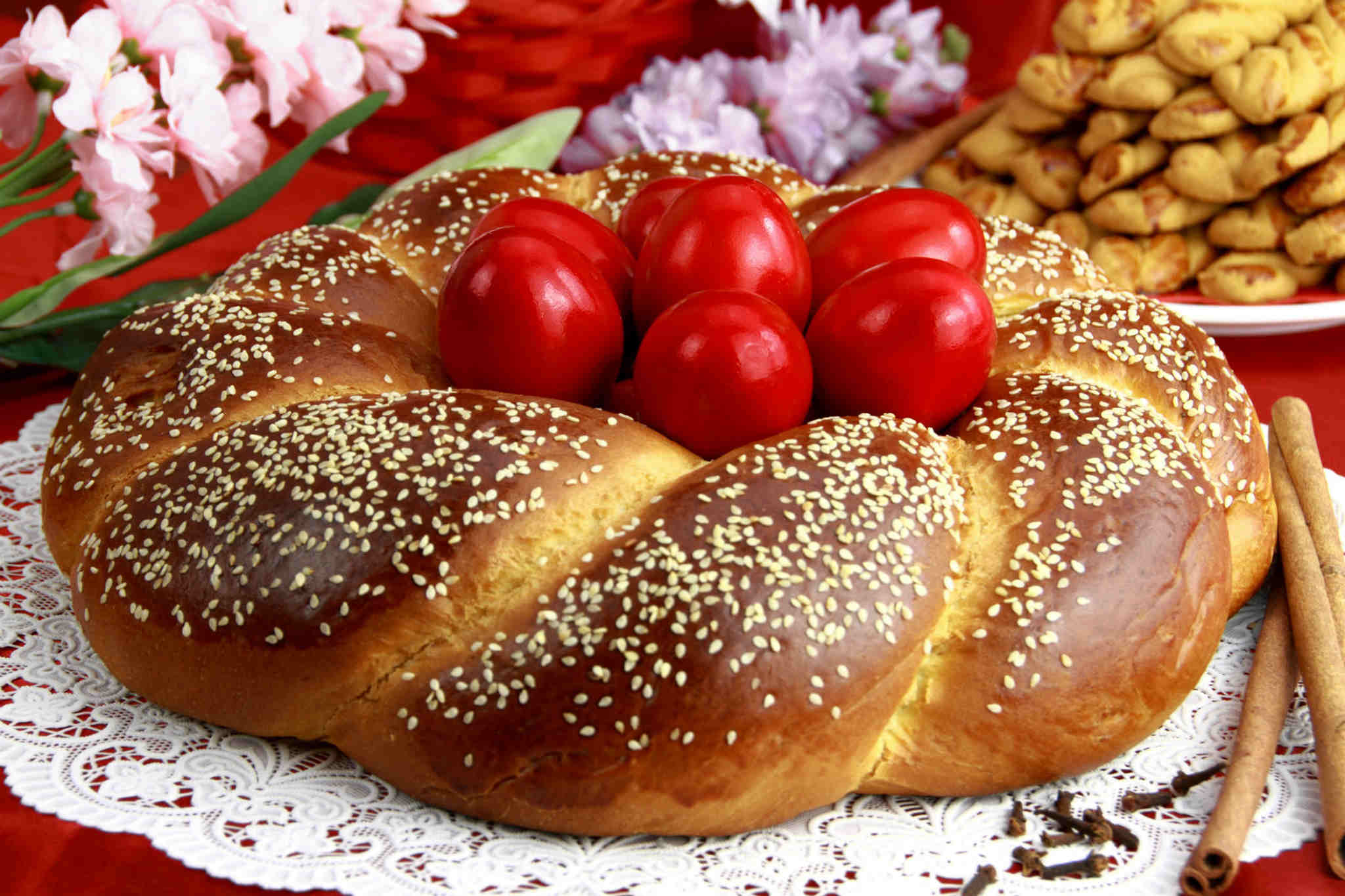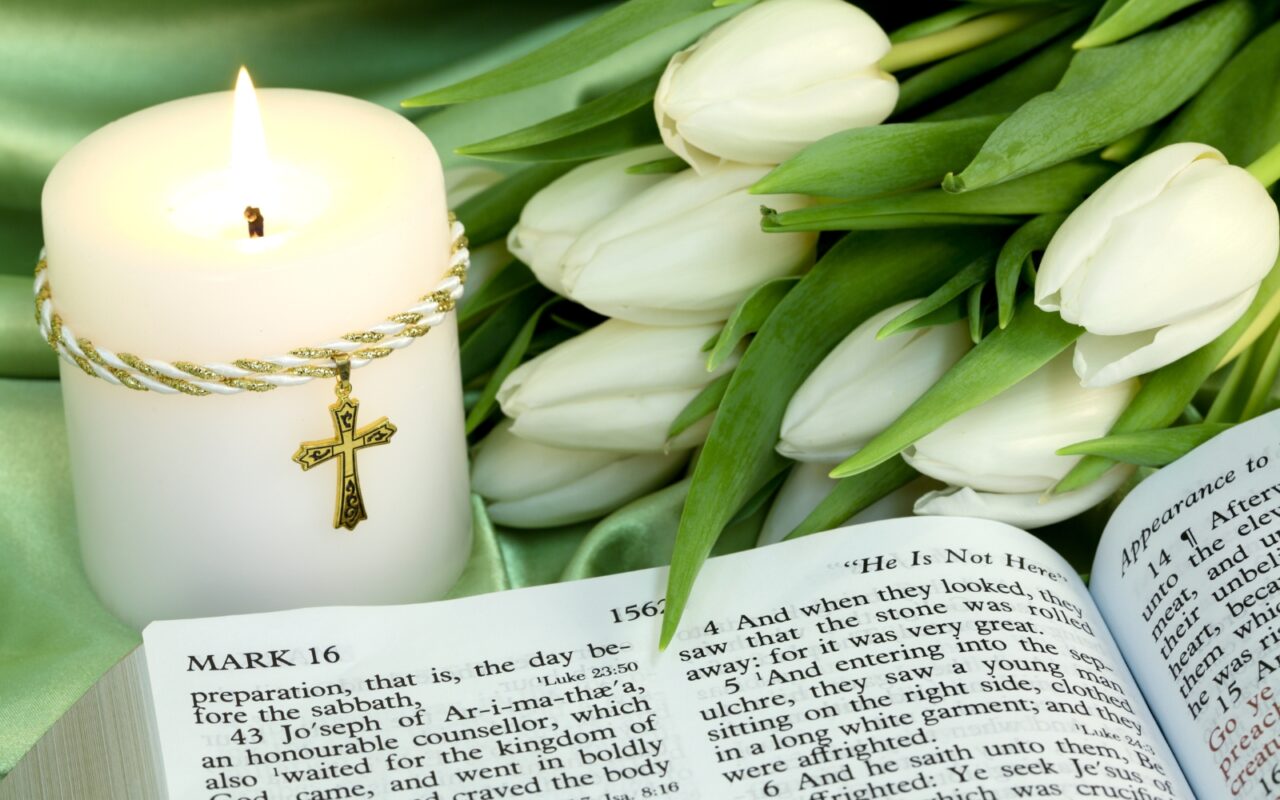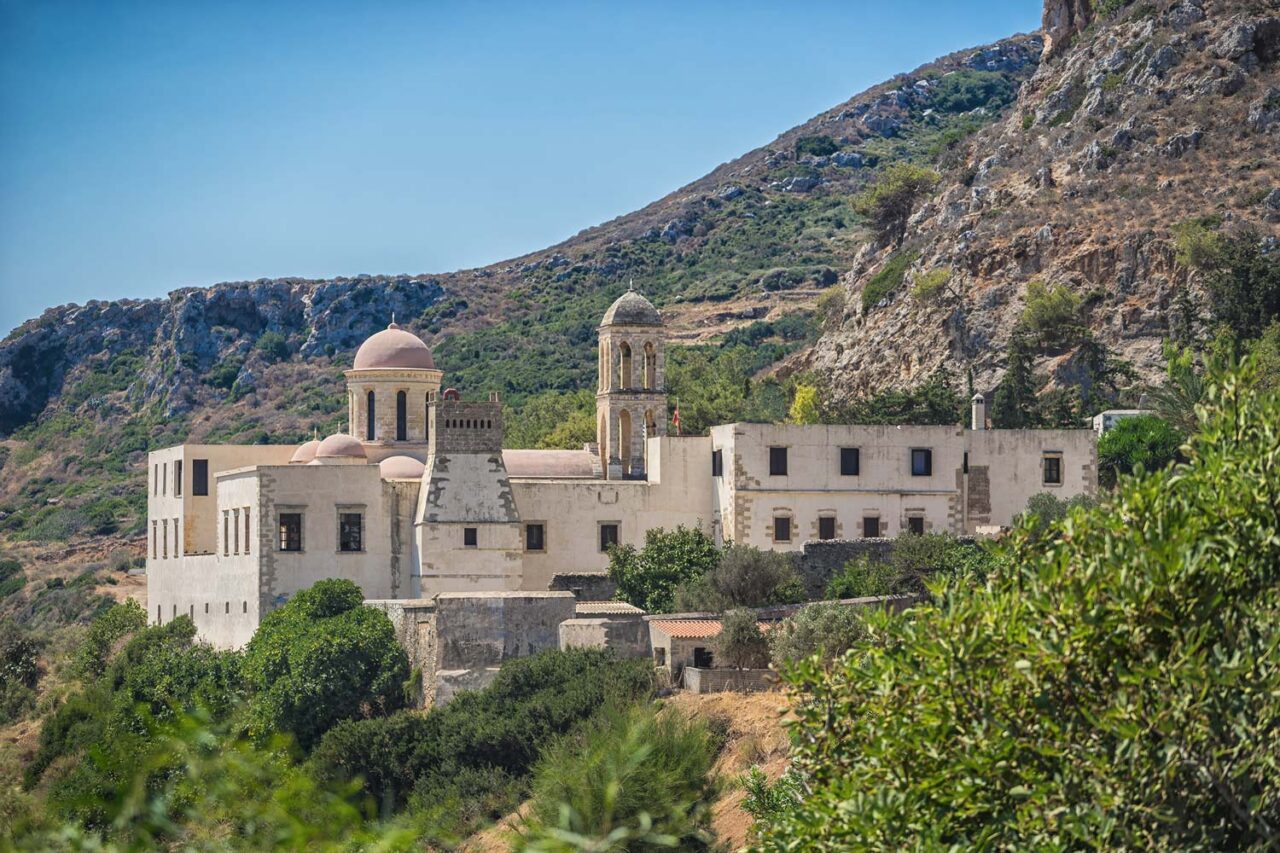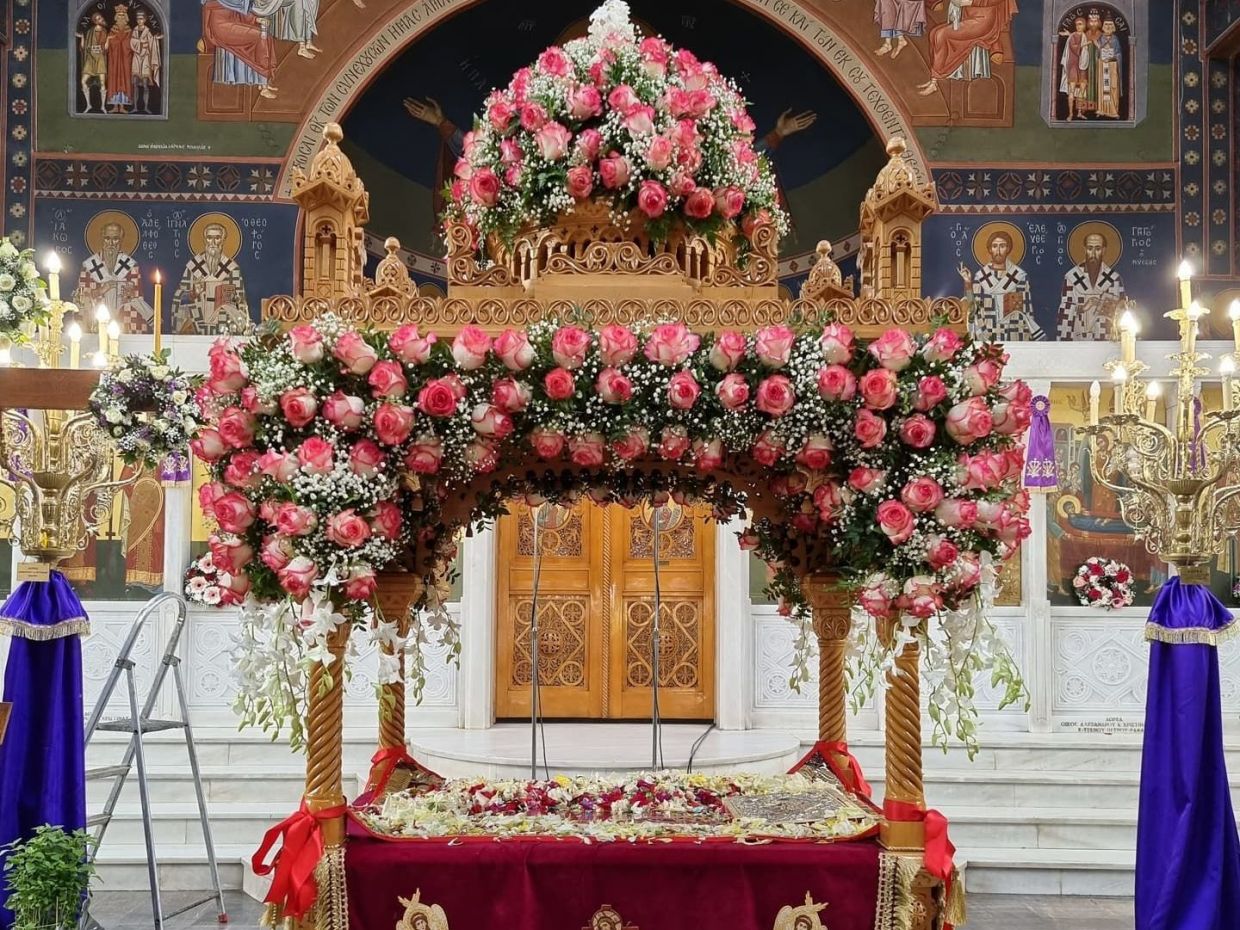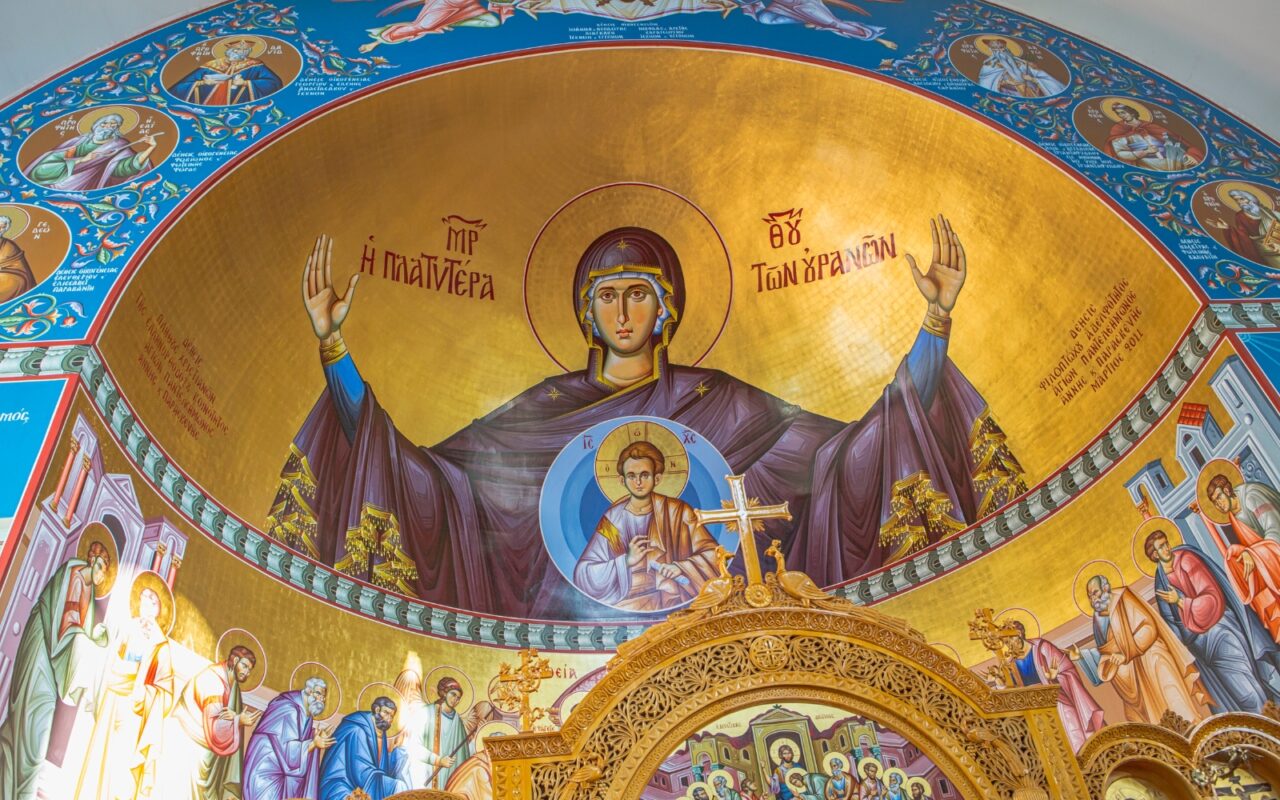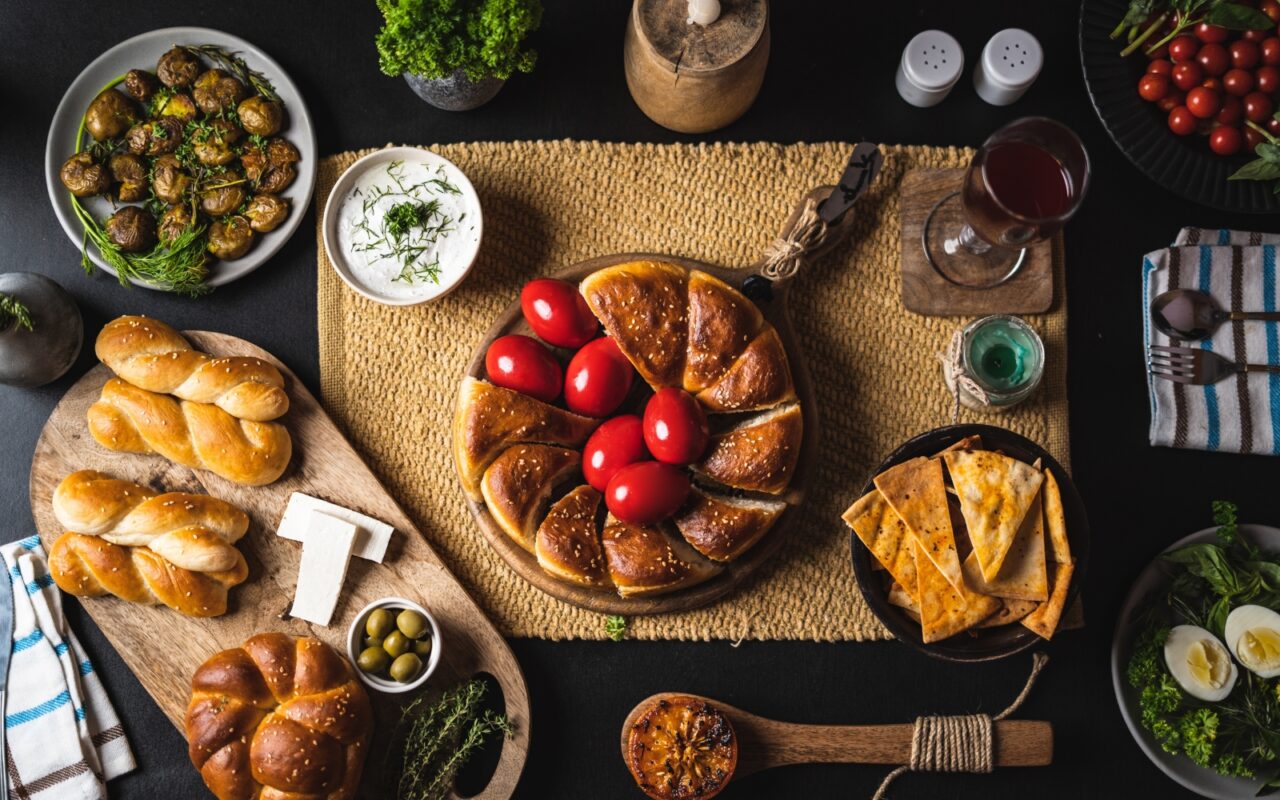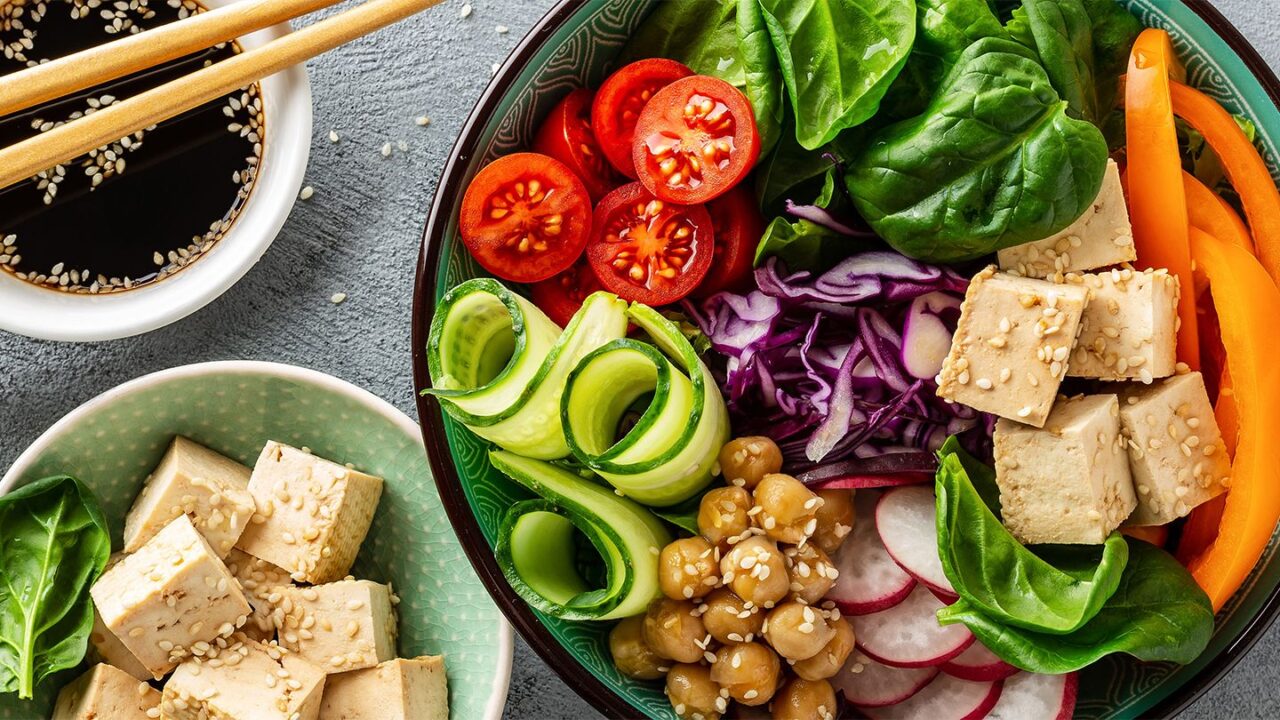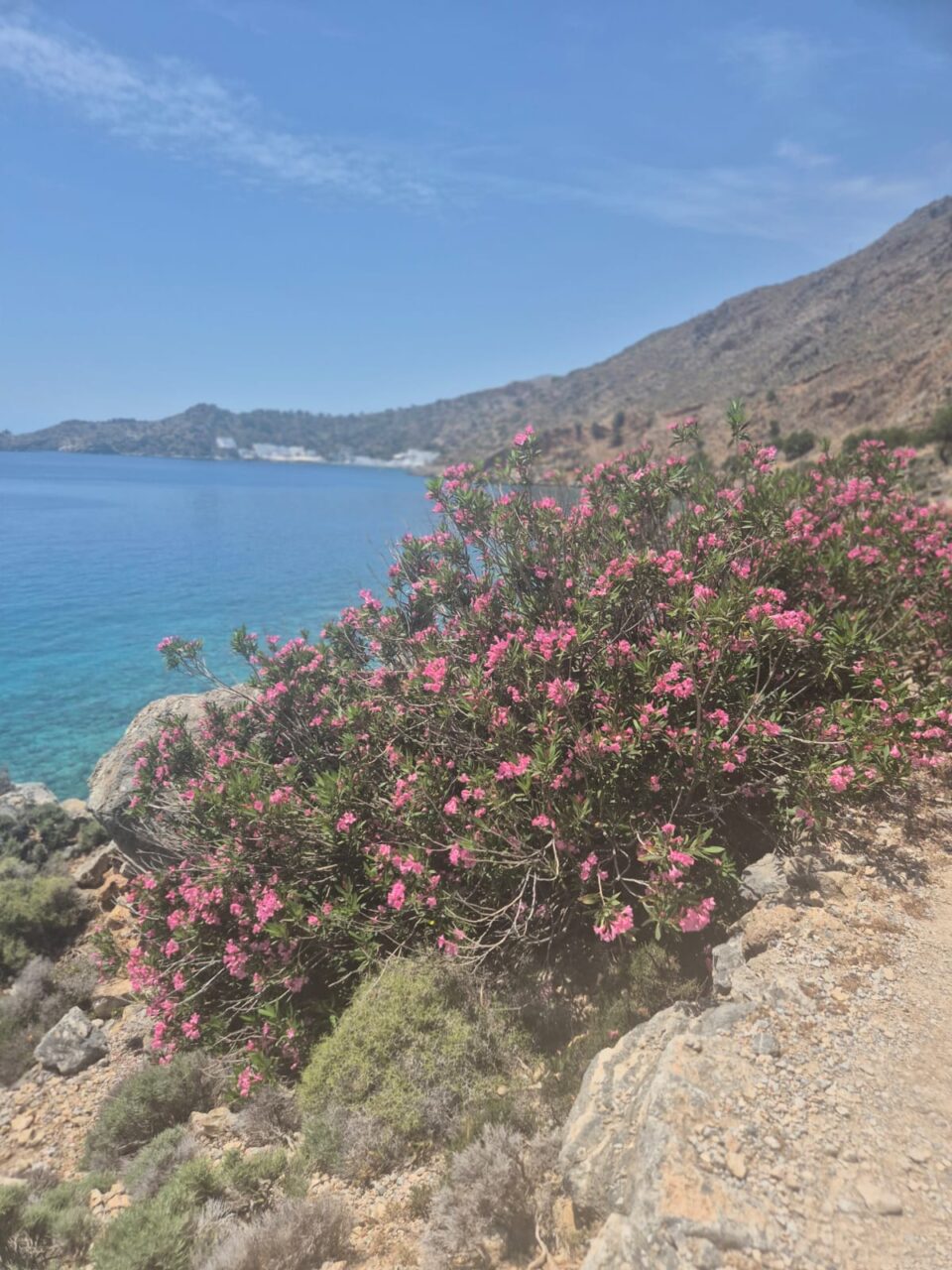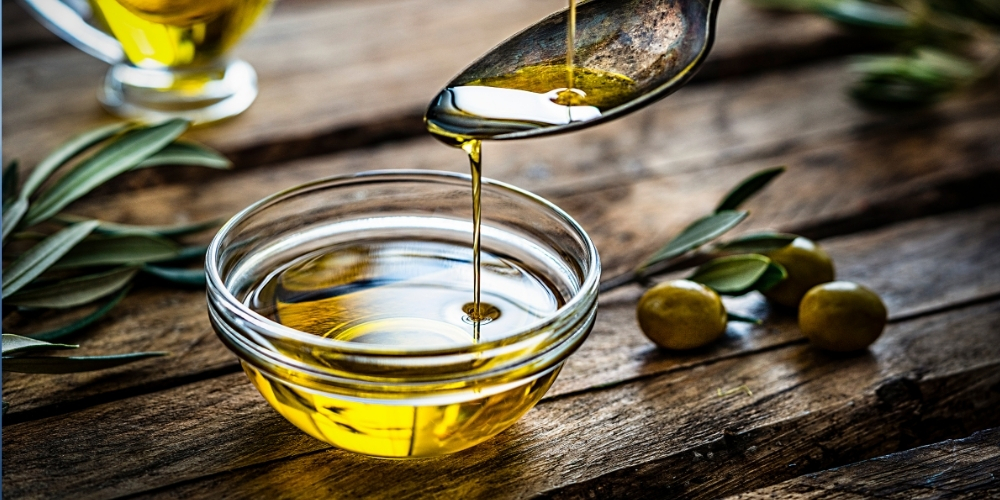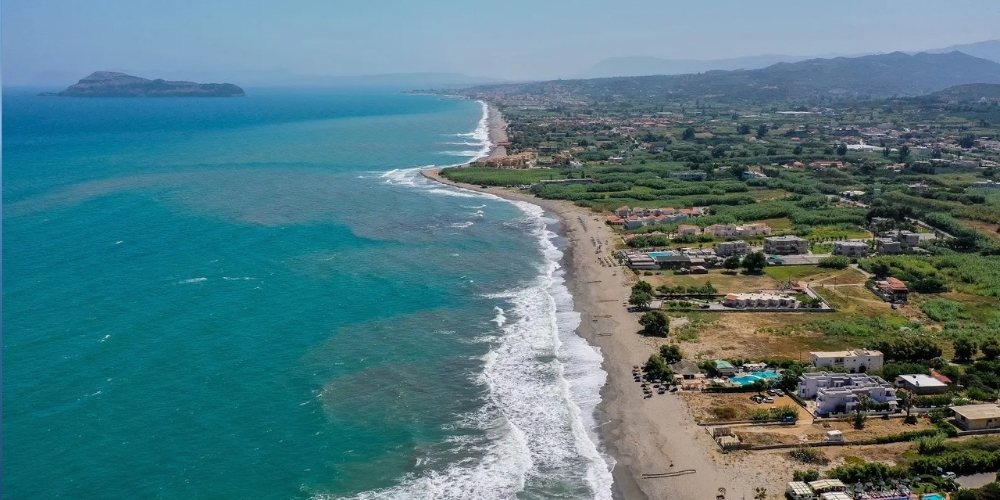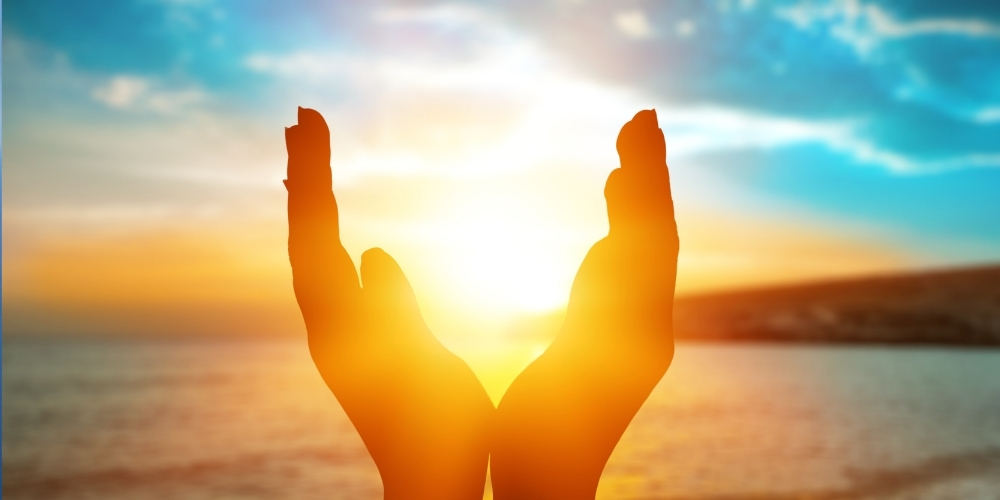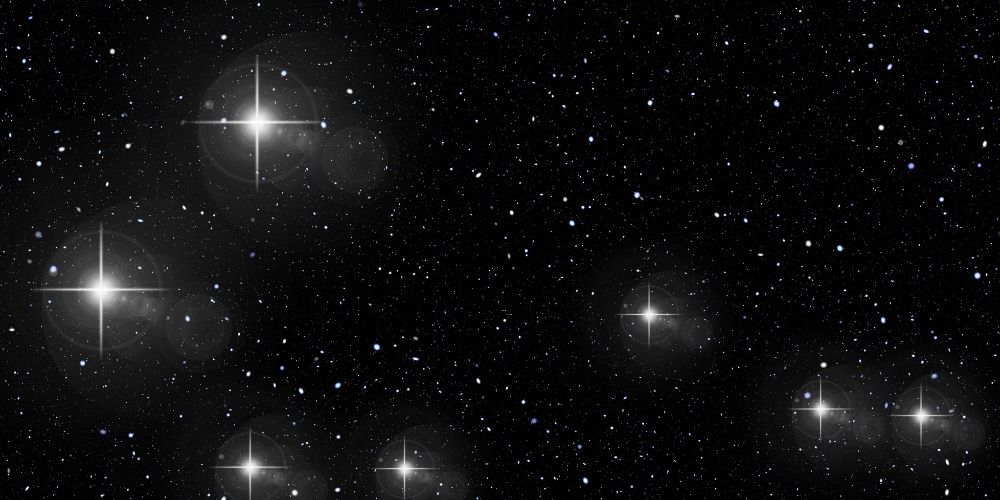GREEK ORTHODOX EASTER AT THE MISTRAL
At least 95 percent of all Greeks claim membership in the Greek Orthodox Church, part of the Eastern Orthodox Church. Until 1054, the Eastern Orthodox and Roman Catholic churches were one body. Theological, political, and cultural differences split the church in two, and those differences were never completely reconciled.
The Greek Orthodox Church does not always celebrate Easter on the same date as the Catholic and Protestant countries. The reason is that the Orthodox Church uses the Julian calendar when calculating Easter. This is case even in the churches that otherwise use the Gregorian calendar. When the Greek Orthodox Church in 1923 decided to change to the Gregorian calendar (or rather: a Revised Julian Calendar), they chose to use the astronomical full moon as seen along the meridian of Jerusalem as the basis for calculating Easter, rather than to use the “official” full moon.
Many Easter traditions originated long before the beginning of the Christian era. Like Christmas, which is related to pre-Christian winter festivals, Easter is connected in many ways with pagan rituals that accompanied the arrival of spring. It is possible that the name “Easter” stemmed from that of Eostre, an Anglo-Saxon goddess of springtime. Easter is also associated with the Jewish festival of Passover, or Pesach. The term “paschal”, meaning “of Easter”, is derived from the name of the Jewish festival, as are the names of Easter in some foreign languages. In Greek, Easter is called Pascha, meaning passover: It is the eternal Passover from death to life and from earth to heaven.
Greek Easter wishes
Happy Easter – Kaló Páscha
Christ is risen – Christós Anésti
Truly he is risen – Alithós Anésti
Have a good Lent – Kalí Sarrakostí
Easter Wishes – hroniá Pollá
Holy Thursday
Pilgrimage to Gonia Monastery
The Venetian-style fortress monastery Gonia in Kolymbari was built between 1618 and 1637 and is dedicated to Mother Mary Hodegetria (meaning she who shows the way). In the Courtyard there is a symbolic tree bearing four different grafted citrus fruits, representing the coming together of the nations.
Buy a candle as you enter the church and join the congregation. It is customary to genuflect when entering but a nod of the head towards the cross is acceptable as a gesture of respect. The Church itself is very ornate – as Greek Orthodox Churches are and it often difficult for those of us used to plain churches to take in. The air is filled with the fragrance of incense and the sound of Greek priests and assistants chanting. At various points in the service people kneel, genuflect, etc – just follow those around you! The service itself is very long with most people just arriving for the ‘important’ parts. This service commemorates the crucifixion and death of Jesus.
It may seem unusual to us who are used to remembering the crucifixion and death of Jesus on Good Friday to be remembering these events on Thursday. In the Roman Catholic and Protestant traditions Thursday is when Christians remember the Last Supper Jesus shared with his friends and his arrest in Gethsemane, but for the Orthodox tradition it is when Christians remember the suffering and death of Jesus.
The service we will attend is known as the ‘Service of the Twelve Gospels’ (‘Akolouthia ton Thodeka Evagelion’) and is the longest of the services during Holy Week. It is known as the ‘Twelve Gospels’ because the service contains a series of twelve Passion readings.
The first reading, from the Gospel of John (13.21-18.1), relates the account of Jesus’ conversation with the disciples at the Last Supper. The next ten passages deal with accounts of Jesus’ suffering and the last passage gives an account of the Jesus’ burial and the sealing of the Tomb.
Another striking feature of this service is the solemn procession with a large Cross through the church. After the fifth reading, the priest brings the Cross out of the sanctuary and places it in the middle of the Church.
The procession of the Cross is the focal point of the service and the Church fills with people. Everyone moves forward to hang garland or wreathes of flowers on the cross and to kiss the feet of Jesus.
After the service ends with girls decorating the Bier of Christ (epitaphios) with garlands of flowers, so that in the morning of Good Friday it is ready to receive the image of the body of Christ when He is taken down from the Cross. Flowers of various colours are used but in Crete it is common to use the flowers of the lemon tree. The Bier becomes the central part of the Good Friday worship.
Good Friday
Street Market in Voukolies
Procession from the Cathedral in Chania
A day of mourning and of strict fasting – No meat today!!
The Good Friday market takes place once a year in Voukolies and it is when people from the local villages gather to buy and sell produce before the Easter celebrations and to catch up on news from the previous year. It is a day for catching up with old friends and buying the lamb or goat for the Easter feast. It used to be a traditional farmers market but now has become a place where you can buy clothes and toys as well as fruit and veg. If you’re brave enough you can go and see the place where the lambs and goats are slaughtered – not for the faint hearted.
Tonight we will go to Chania town centre to watch and participate in the Good Friday procession. The drama of the death of Christ is followed with great devoutness. The icon of Christ is taken off the cross, wrapped in linen and put it in the Bier (Epitafios) symbolizing the tomb of Christ.
Late at night we gather around the edge of the square in front of Chania Cathedral. This is a civic occasion with local dignitaries, members of the armed forces as well as scouts and guides all present. The bier is carried through the streets of Chania. A military band playing solemn funeral music precedes the procession; they are followed by the cantors, the clergy, the altar boys and then the crowds of local people carrying candles following behind.
When the Bier arrives back at the Cathedral it is lifted high and people queue to duck underneath and touch it – to receive a blessing. Again it is fine for us to join in with all of the traditions as long as we are respectful.
Easter Saturday
Easter celebrations in Maleme
The Easter celebrations for the Greek Orthodox Church begin at noon in the Church of the Holy Sepulchre in Jerusalem. The Orthodox Patriarch enters the Holy Sepulchre, recites special prayers and remains waiting. The crowd, in the darkened church, repeats continually with a loud voice: “Lord, have mercy.” (Kyrie eleison). At a certain moment the Holy Light flashes from the depth of the Holy Sepulchre in a supernatural way, miraculously, and lights up the little lamp of olive oil put on the edge of it. This miraculous light is then transported to Greek Orthodox Churches all over the world.
Just before midnight we will go with our decorated candles to the local Church in Maleme along with all the people from the village for the most important service in the Greek Orthodox calendar. At midnight all the lights are extinguished in the church and the priest comes from behind the doors on the altar carrying a candle. He walks to someone in the front row and lights their candle and these people who receive the light of the resurrection pass the light from candle to candle and the light fills the church and out into the street.
It is a wonderful moment of celebration! Everybody kisses everybody and says, Christós Anésti – Christ is risen! To which the response comes, Alithós Anésti – Truly he is risen!
Fireworks can be heard and it is customary for young people to light a huge bonfire in the churchyard to burn Judas, the apostle who betrayed Jesus.
It’s a custom to carry this candle back home, taking care the flame is not extinguished. At the house 3 crosses are made with the flame above the entrance door: the black soot ‘paints’ the crosses, in order to bless the house and its inhabitants by the light of Christ’s resurrection. A special oil lamp is also lit which will burn all year to remind people of the resurrection.
A truly special night!
Easter Sunday celebrations
Easter Day is a time of celebration at The Mistral. Preparations for the feast begin early, and a whole lamb is roasted over a spit in the garden, as guests help to lay the long tables as family and friends start to arrive. All day the kitchen is buzzing with activity; red dyed eggs hard boiled eggs- the custom is to crack them with friends– are piled up in baskets, and plates of Katerina’s special Easter cakes appear. The huge meal, which goes on for several hours, is accompanied by copious quantities of wine and much laughter.
All over the world Greeks will eat lamb on Easter Sunday. The popularity of lamb as an Easter food is undoubtedly related to its importance as a symbol. The origin of the symbol is related directly to the Jewish Passover. In ancient times the Jews sacrificed a lamb in the course of the festival. The early Christians, most of whom were Hebrews, associated the sacrifice of the lamb with Christ’s sacrifice on the cross.
The egg was also connected with the springtime fertility rituals of many pre-Christian and Indo-European peoples, like the old Cretans, and both the Egyptians and the Persians made a practice of colouring eggs in the spring. In Christianity, the egg is a symbol of Resurrection, representing the emergence of Christ from His tomb to everlasting life.
Greeks mainly color eggs red (scarlet) to signify the blood of Christ. They use hard-boiled eggs (painted red on Holy Thursday) and distributed on Easter Sunday; people rap their eggs against their friends’ eggs and the owner of the last uncracked egg is considered lucky.
Easter Wishes – hroniá Pollá!

